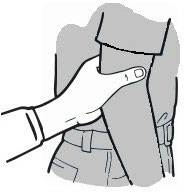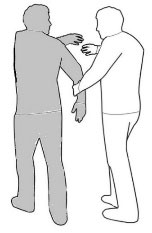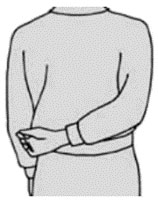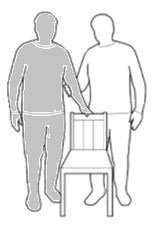3. Walking:
Keep your arm relaxed and close to your side. When you start walking, make sure the person is half a step behind you and slightly to the side. Walk at a pace that is comfortable for both of you. Look ahead for obstacles at foot level, head height and to the side. As a human guide, you should walk a half step ahead of the person you are guiding.










